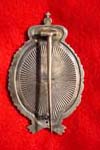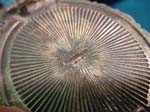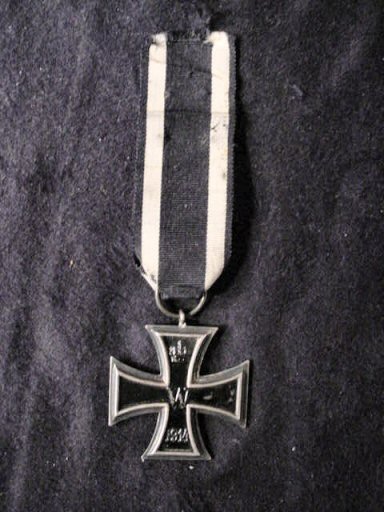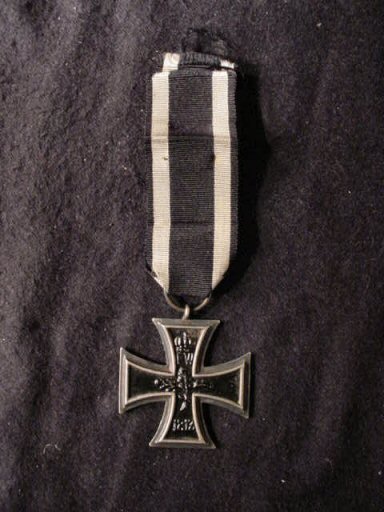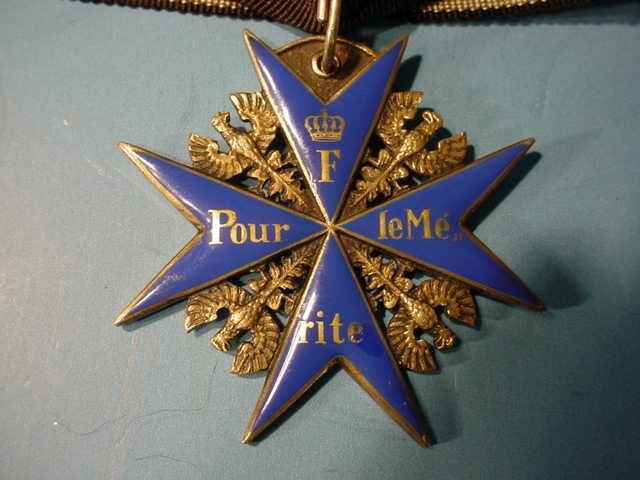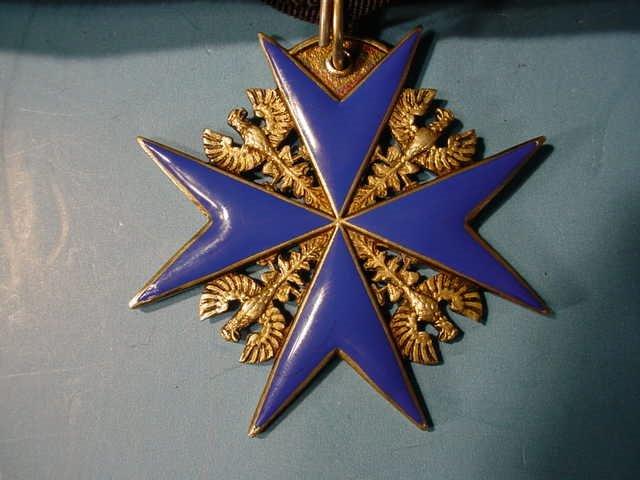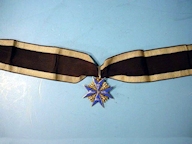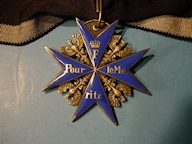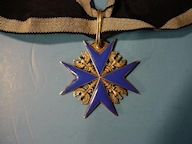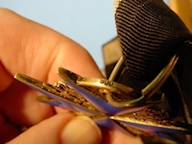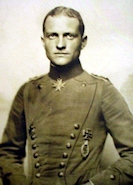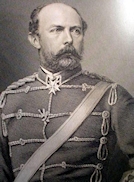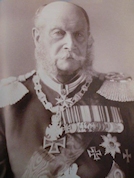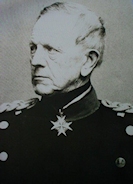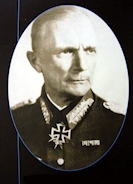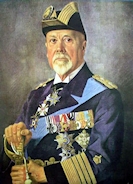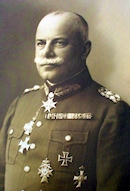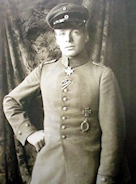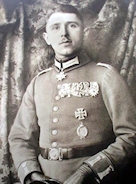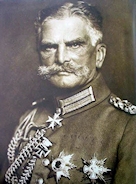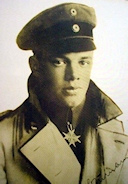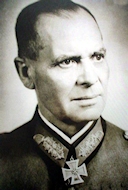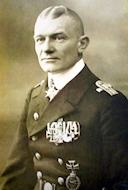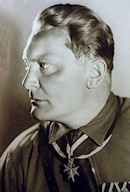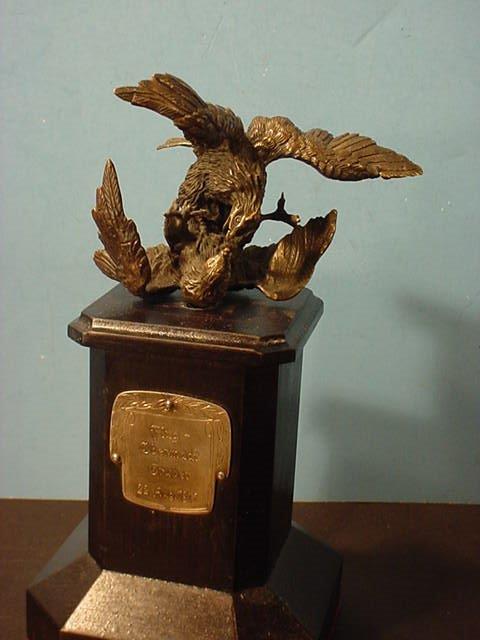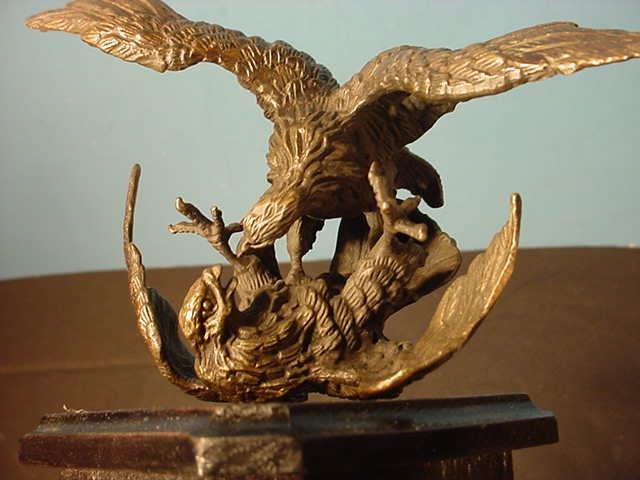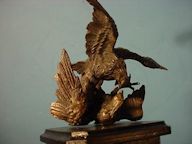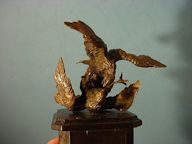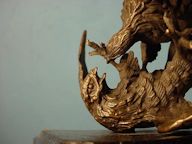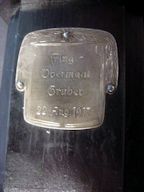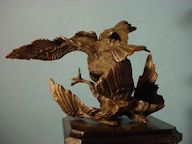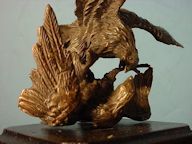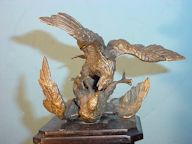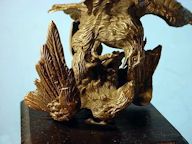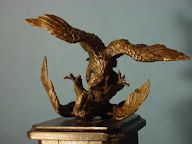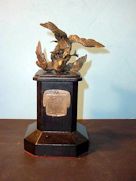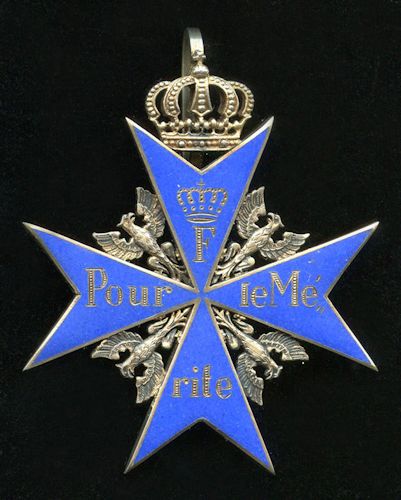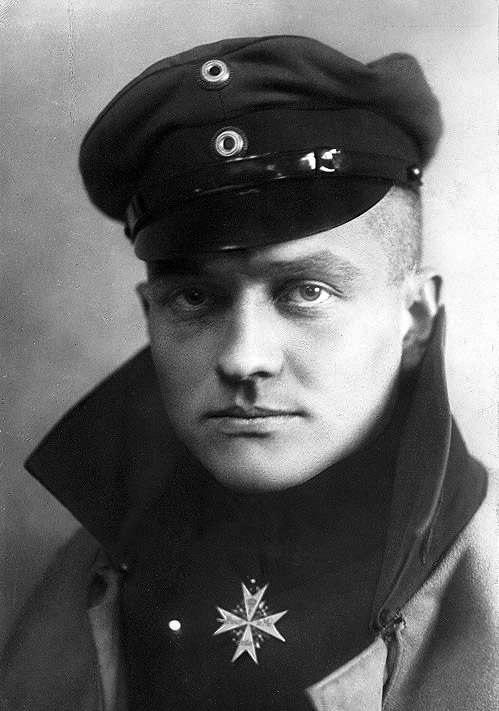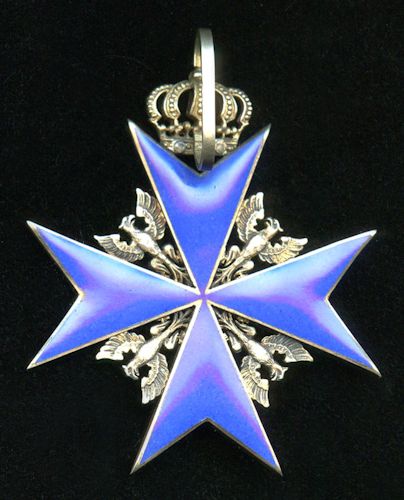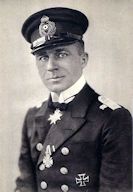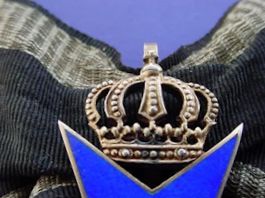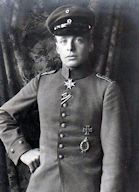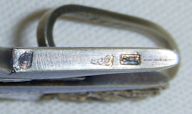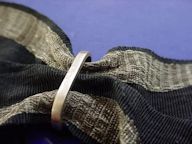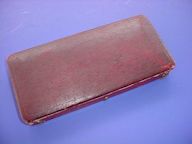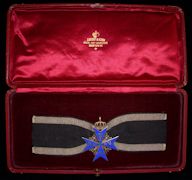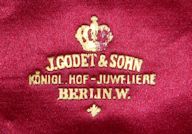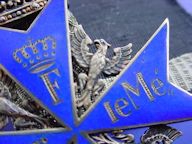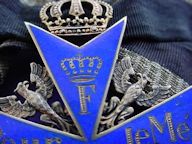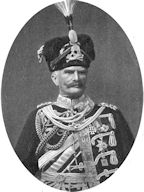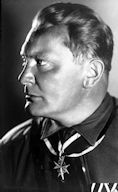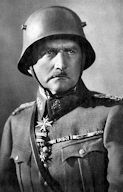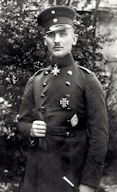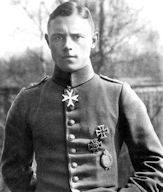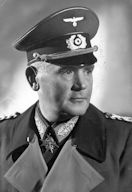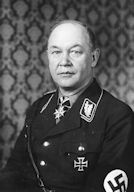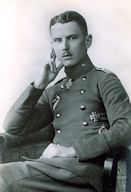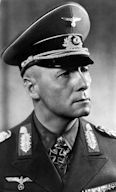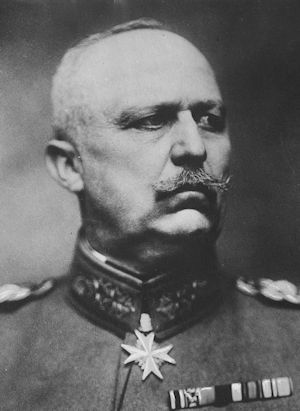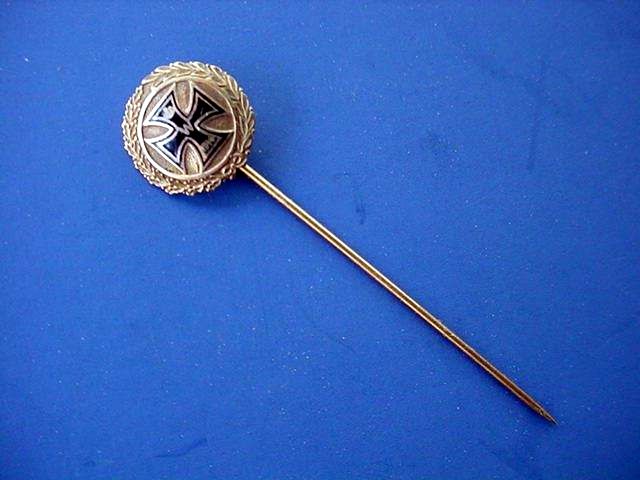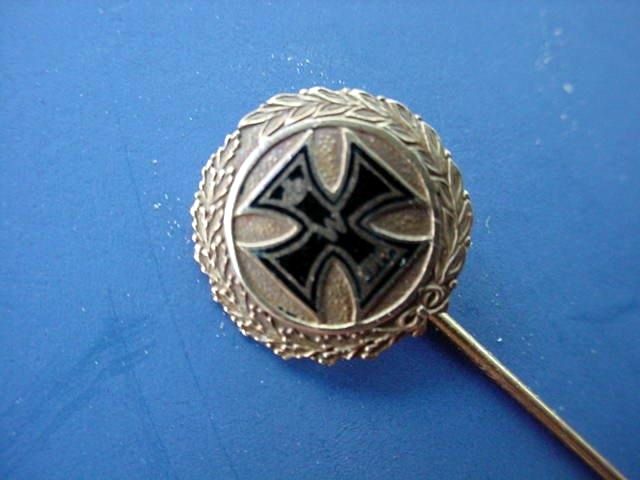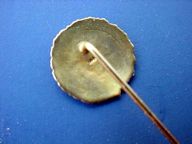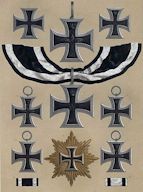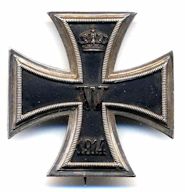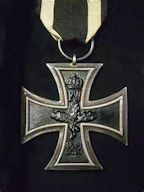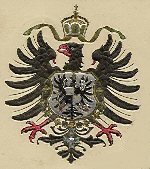|
|
|
|
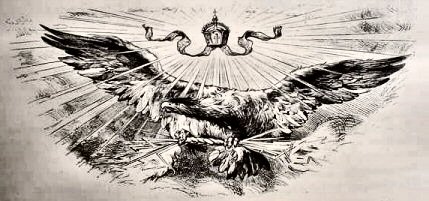

Medals
Page 5
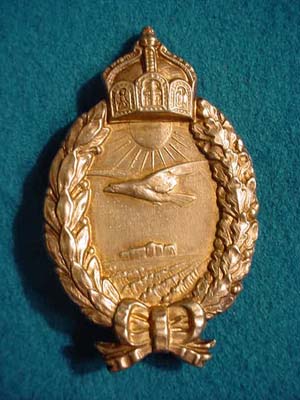 |
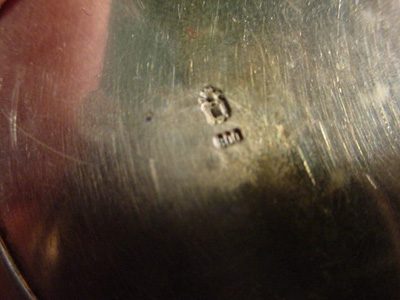 |
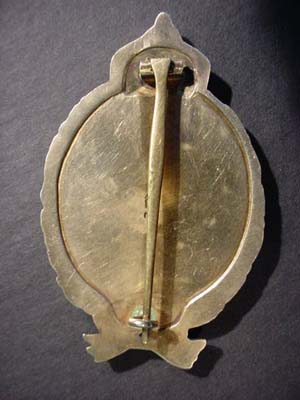 |
A Badge for Naval Pilots on Seaplanes (Prussia) (Item KMEDAL 5-1 & WWI 11-15) |
| DESCRIPTION: This award was founded in May 1915. It is the same as the one shown at the top of the page in Detlev Niemann's price guide book. The detail is fantastic with the oak leaves and palm leaves standing right out in high relief and superb detail. The Prussian crown also is highly detailed. It has the 800 silver designation and a company logo. Just as nice as they come (and they come rarely). This badge has a beautiful antique silver look that looks almost gold in appearance. Perfect condition and extremely rare!
PRICE: SOLD |
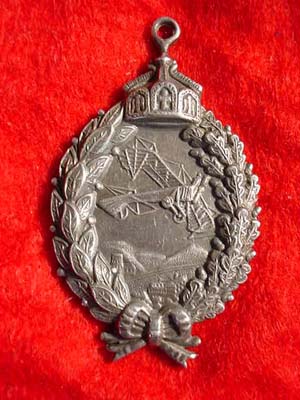 |
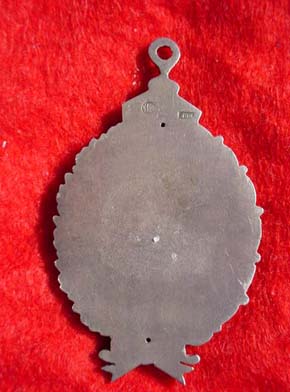 |
Prussian WWI Flyers Badge (Prinzen) Silver Miniature (Item KMEDAL 5-2 & WWI 11-16) |
| DESCRIPTION: Extremely rare and seldom seen, this is a miniature of the Prussian Pilot's Badge of WWI. The “Prinzen” is a badge that is usually made by the finest German jewelers in exquisite detail and produced by custom demand. The detail of these Prinzen editions is actually finer than that seen in the full size badges as they were made from time to time to be worn on the off duty high dress non-uniform formal attire but also pilots gave them to their wives and sweethearts and fitted to wear on a chain around the neck -- in other words, as jewelry, (fine jewelry at that!). The badge measures about 2" tall x 1 ¼ " wide. A wonderful historically important remembrance piece that commemorates the era of the chivalrous “German Sky Knights” in combat. PRICE: $700.00 |
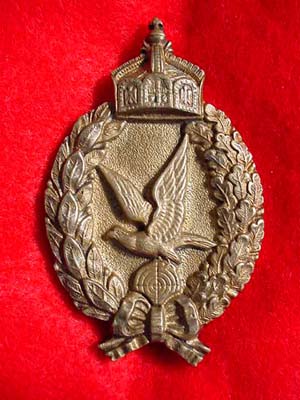 |
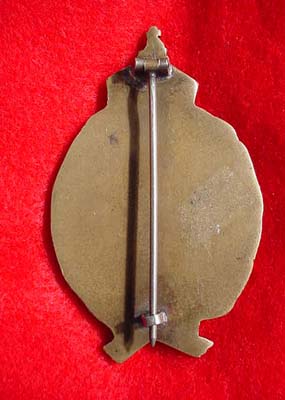 |
Air Gunners Badge (Abzeichen fur Fliegerschutzen) (Item KMEDAL 5-3 & WWI 11-17 & LUFT 18-13) |
| DESCRIPTION: This badge was founded in January 1918 but the awards continued under the Weimar Republic Reichswehr through 1921. This is a later edition -- possibly a Third Reich strike when an airman qualified for the award and lost it through the fortunes of war. He could have one newly made in that later time. This is possibly one of these 1920 or 1930’s replacements; the quality is great with every oak leaf and palm leaf standing out in beautiful detail. The eagle and crown are also beautifully outlined. Detlev Niemann says the original issue were in non-silver often but silvered. We have seen what was identified as original in a German museum in bronze color similar to what we offer here. This badge is in extremely high quality which indicates to us that it is 100% original. The back is perfectly flat and there is no maker mark. The pin has a barrel clasp and is straight, so we present this piece as a later edition but surely a fine collectible relic of the “great war, to end all wars. “Yeah sure!!!
PRICE: $485.00 |
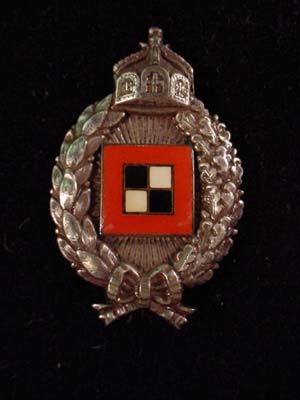 |
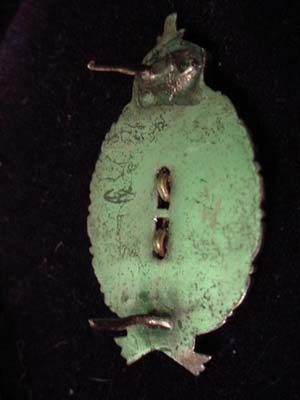 |
A Prinzen Miniature Prussian Flight Observer's Badge (Prinzen Grosse) (Item KMEDAL 5-4 & WWI 11-18) |
DESCRIPTION: This is far more rare than the full size medal and when rarely found they are in the finest detail imaginable. They were generally struck in silver by some of Germany’s most prestigious jewelers such as Sy and Wagner of Berlin and Godet. This is one of the finest examples that we have ever seen. Usually these miniatures were worn by air crew members that were often royalty or at least of the Prussian Junker nobility. This example is fitted with two prongs that protrude out of the back -- this could be for mounting on a cigarette case or jewelry box or it could be fitted to be worn on the leather jacket of the airman. In any case it is of elegant and prodigiously beautiful detail. Fit for a Baron! PRICE: SOLD |
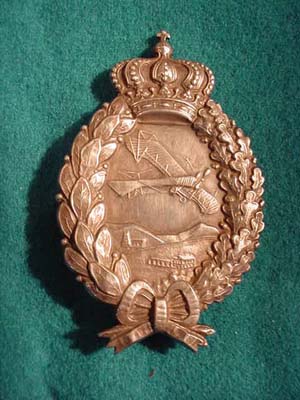 |
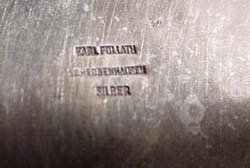 |
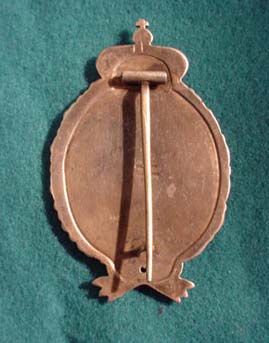 |
WWI Bavarian Pilot Badge by Carl Poellath (Special Strike) (Item KMEDAL 5-5 & WWI 11-19) |
DESCRIPTION: This is an excellent example of the Bavarian Pilot Badge from the enduring saga of WWI Air War. The detail is ultra magnificent with the oak leaves and palm leaves in so high a detail that they look like they have been applied piece by piece. The airplane is also spectacular in detail as is the magnificent crown; Carl Poellath was a maker of the highest renown. The piece has the barrell step fastening device with straight pin. The backside under the company name is the word silber (silver). This is a rarely found maker and he was the best! This is what we term a “special strike.” An example of the highest excellence of the medalist art. This, unlike most of the fine Poellath, has the flat back without the sun ray design that emits from the name in the center. Absolutely stunning in feature, form and design. PRICE: SOLD |
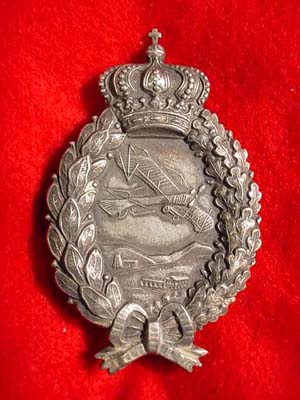 |
WWI Bavarian Pilot Badge by Carl Poellath (Item KMEDAL 5-6 & WWI 11-20) |
DESCRIPTION: This again is a spectacular badge by one of the finest makers of the Imperial Period. It is of the Carl Poellath Schrobenhausen series marked silber (silver). This badge has no moon crown and 800 and this is correct on Bavarian badges. But here is an example of the sunburst back design that is superior to most of the ones that have been offered on other sites. Germania scores again!!! The measurements are: length 71mm; width 45mm. These badges are symbols of the chivalrous knights of the sky. There is a romantic connotation to them not unlike holding a sword of the Teutonic Knights of old. Yes, I am “waxing poetic,” but then I guess I often love these things even more than my wonderful customers do. I maintain that when something 100% original and as important as this rests in the palm of the hand, visions of the heroic struggle in the skies seems to materialize somewhat even for a few nostalgic minutes. The badge is in perfect all over condition. This badge in this special quality has to be specially ordered and must have cost more than the average ones in its day! In many decades we have not seen a Bavarian Aviation Badge that is this fine ever surface except for the one listed above this one on this page (the one that was specially struck by Carl Poellath on custom demand). Be sure to see that one as well. PRICE: SOLD |
| ||||
Iron Cross, WWI (Item KMEDAL 5-7, WWI 9-2, WWI 1-1a) |
||||
| DESCRIPTION: Here is the most familiar medal of valor that is known through the world—the German Iron Cross. Here is a nice issued exampled. The cross itself is in very fine condition in three-piece construction. Its all-original finish is intact. The date, ‘1813’ is on the back signifying the earliest issue of the award, while the front has the ‘W’ for Kaiser Wilhelm with the Prussian crown and ‘1914’ for that present issue. The ribbon is fine with a small bit of age fraying here and there, but generally is good and it speaks to you in the fact that it has been there all through the many years. This is a nice example of an award that gets increasingly rare.
PRICE: $168.00 |
|
|
|
|
Pour le Mérite (Blue Max) in 900 Silver (Item KMEDAL 5-8) |
|
DESCRIPTION: This magnificent Pour le Mérite was probably by the firm of Rothe in Vienna, Austria. We do not claim that this ‘Max’ was issued and worn by an original recipient who won it in WW I, but rather is an example made by Rothe in the 1930s or 1940s. This is quickly evidenced by the brilliant deep-blue color and the fact that there is no marking on it other than the number “900” on the very top of the part that enjoins the suspension loop. There are no jeweler marks or initials on it other than “900” that indicates to us that the award is crafted in genuine silver of the grade comparable to 90-percent precious metal of the type used in European coins and expensive jewelry. This would also indicate that the medal was specially ordered for someone of the Junker class, possibly a member of royalty. Now! Please understand that when we say it is not an issue piece we definitely do not imply that it is a copy. It is a 100-percent genuine pre-WWII medal. It is what is termed a ‘wearing order’ that would be purchased often at a high price by a Pour le Mérite holder to be worn with the duty uniform in place of the valuable and delicate gold badge. Other varieties made by various jewelers were undoubtedly purchased after the First World War to replace lost or damaged pieces This one we offer is much like the wearing example often seen being worn by Reichsmarschall Hermann Göring and other notables in the 30s and 40s. The Rothe models were in wonderful high quality with very detailed graceful eagles in the arms of the cross with beautiful cut-out tail feathers. The usual Rothe Max was in a cornflower blue unless ordered specially as this one obviously was in the deep navy-blue color, but this also indicates that it was purchased as late as WW II. The quality is superb. The ribbon is also late. We assume that because of its mint condition. The medal was purchased by Germania from the prestigious firm of Helmut Weitze in Hamburg, Germany, and again it is 100-percent original and in pristine condition throughout. If you have seen the famous film The Blue Max you will remember the pilot that seemed to allow nothing to stand in his way in his fervent desire to win the coveted medal. This was usually the case with all the German heroes of the First World War. This was the Holy Grail of the Teutonic soldiers and sailors, and actually airmen were the usual winners, but army personnel also received them. No other award was so sought after and won through dazzling exploits performed with bravery for the Kaiser, Folk, and Fatherland . . .
PRICE: SOLD |
|
|
|
|
|
Prize of Honor for Victory in Aerial Combat in the German Imperial Naval Air Service (Item KMEDAL 5-9; LUFT 20-19; WWI 12-19) |
|
DESCRIPTION: Here is an award that is much rarer than even the famed Ehrenpokal of the Luftkampf (The Honor Goblet). This is the “Ehrenpreis für Vernichtung eines feindlichen Flugzeugs” translated: “Honor Prize for the Destruction of an Enemy Aircraft.” This is not a goblet, but a highly detailed sculpture of two bronze eagles locked in mortal combat representing the Adler-Kampf (Battle of the Eagles) and this was, of course, the suitable design to represent the engagement of WWI fighter planes in the proverbial “dog fight.” The Ehrenpokal, commonly known as the Honor Goblet, had the same Adler-Kampf as its central design in both the WWI version, and the WWII version, which was personally designed by marshal Hermann Göring. The Imperial German Navy had only a small contingent of naval pilots compared to that of the army, therefore far fewer of these Ehrenpreise were ever awarded. At first, the prizes were awarded to naval pilots for their first “kill” although later in the war more kills were required to earn the award. Usually, high-ranking officers in the army air service were the pilots, but often other naval air personnel could be the winners of various honors and were often an ordinary seaman, who was not necessarily a pilot, but could be a rear gunner or even a crack artillery ace who destroyed a great number of enemy aircraft. In this case, the award we offer was won by a Flugobermaat (flying petty officer first class) by the name of Gruber, who won it for action on August 22, 1917. Petty Officer Gruber had a flying talent that earned him this prestigious award bestowed in the name of the Kaiser’s Kriegsmarine. Obviously, he did not win this award because of any air-to-air combat while piloting a Friedrichshafen FF.41A (a reconnaissance/bomber/minelayer floatplane), as the meaning of the award would suggest, but rather he earned this during an incident in his role in the bombing of the Russian destroyer Stroinyi on the date indicated on the trophy (“22.Aug.1917”). Stroinyi, among other ships, was anchored at the Estonian island of Osel, in the Baltic Sea. During a reconnaissance mission, Gruber and his observer sighted the anchorage scene, and flew to their home base to load up on bombs, then returned to the site to make their successful bombing run: one of the bombs struck Stroinyi’s superstructure, which thwarted any attempts by the Russian crew to effect repairs from a previous incident. Besides being a beautiful sculpture, this item is prodigiously important and extremely rare today. It is a symbol of bravery and military excellence in combat on the high seas and is a worthy prize for its original recipient, and the fortunate collector who will procure it. “Hebt hoch Deutschlands Fahne” PRICE: SOLD |
|
|
|
|
|
|
|
|
|
An Amazing and Special Artifact (Item KMEDAL 5-10; WWI 12-28) |
|
DESCRIPTION: Here, Germania International offers a fantastic example of one of the most coveted medals in all of military collecting: The Pour le Mérite; the BLUE MAX, AND, this is a great variant for beginning or even advanced collectors of the subject. Not just because it has the crown suspension for the 50th Anniversary of the Recipient’s original awarding of the Order, BUT because this PARTICULAR piece is actually a PIECE of ROCK-SOLID EVIDENCE, pinpointing the era of manufacture, and therefore reason for existence of this particular manufacture style of Pour le Mérite. Read on . . . In the area of PLMs, one term that is heard FAR too often is “jeweler’s copy.” While jeweler’s copies were indeed made for recipients for numerous reasons, far too many were made strictly for collectors, and therefore are really JUST copies. Sometimes fakes. Here we have a TRUE jeweler’s copy, which can be PINPOINTED to a period of manufacture, making it most likely to have been produced for a Franco-Prussian War Pour le Mérite recipient who needed a crowned example of the Order as appropriate for the 50th Anniversary of the original awarding of the order. The PLM offered here is marked on one of the arms of the cross with the “900” silver-content marking, and a cartouche with the inner markings obliterated. The markings inside there might well have been the “FR” seen on Rothe & Neffe orders, as the eagles on this cross correspond to eagles on other known orders produced by Rothe. And there is one more mark, down closer to the center of the badge that sheds MUCH light on the piece we have to offer. Down the same arm of the cross that has the “900”and the obliterated cartouche is a small blob of a marking, not crystal clear, but DEFINITELY the post-1921 Austrian silver content mark of the Hoopoe bird in an irregular cartouche! Our PLM is marked on the suspension loop attached to the crown, JG&S for J. Godet & Söhne. Also, our PLM is in the original presentation case, also marked to the firm of J. Godet & Söhne. The WONDERFUL thing about this is that it PINPOINTS manufacture, along with the Austrian silver mark, to 1922-1924! This means, without a doubt, that the PLM we are now offering for sale was manufactured between 1922 and 1924, most likely for a Franco-Prussian War PLM recipient, to show the 50th Anniversary of his original award. The company Gebrüder Godet & Co. (brothers Godet & Co.) was founded 1761 by the goldsmith Jean Godet. The company was one of the first German manufactures of orders and honorary signs in Germany. Godet became the prime royal warrant for orders under the leadership of Jean Frédéric Godet. The company was known as J. Godet & Söhne between 1864 and 1924. The company name then changed to Eugen Godet & Co. The name changed again in the late 1920s or early 1930s to Gebrüder Godet & Co. Why would the “Tiffany” of Germany, Godet, outsource the manufacture of a Pour le Mérit to a firm OUTSIDE of GERMANY??? Let’s look at the economic climate of Germany circa 1923 (the median year in our very small window of possible manufacture). From 1921-1923 Germany experienced hyperinflation. Money was being devalued by the hour sometimes, and it could take millions of Reichsmarks just buy a loaf of bread. Now, the wealthy were still wealthy during these times, having their money safely invested or hidden in forms other than paper currency. So, it only makes sense that when a wealthy client of an exclusive jewelry firm like Godet decided to acquire his proper “crowned” Pour le Mérite for social or political functions he might attend, rather than try to scrounge up silver in a depleted, depressed, and constantly inflating country, Godet turned to a firm in their much more stable neighbor to produce the award, and then have it marked it with their maker mark. It stands to reason that only during this one moment in time might a firm like Godet need to reach out to a firm like Rothe to produce this needed award for a client. And the markings on this PLM Prove the period of manufacture, without a DOUBT. An exceptional and rare offering of a much-coveted order and handmade most likely by the Austrian Jewelers Rothe & Neffe in multiple pieces, the cross is made of two obverse and reverse cross pieces, exquisitely joined (a perfect seam runs around the body of the cross). The eagles are applied separately, and the crown suspension is riveted to a bar at top. The enamel is perfect and of the highest quality. The badge is marked to the firm it was sold by, J. Godet and Söhne of Germany, and comes in a beautiful leather and silk presentation case boldly marked by the firm, as well. This is a wonderful investment-grade Pour le Mérite and a great piece for the beginning collector of this Order, or a wonderful variation for an advanced collector of this Order. VINTAGE: Circa 1922-1924 SIZE: Medal: approximately 2-1/2” in height and 2” in width; case: 10” by 4-3/4” by 1-1/2” CONSTRUCTION/MATERIALS: Enameled 900 silver in two-piece construction (seam is evident); leather-wrapped board, velvet ATTACHMENT: Hook on crown; hinge, hooks and push-release on case MARKINGS: JG&S (J. Godet & Söhne mark) on side of loop; 900, cartouche with obliterated markings and Austrian silver mark, all on side of arm CONDITION: 8 (excellent): The medal is in beautiful condition. I usually shy away from the word “mint,” but I feel compelled to use it this time. PRICE: $7,500.00 |
|
|
|
Solid Gold WWI Iron Cross Stickpin (Item KMEDAL 5-11; KJEWELRY 3-1; WWI 13-4) |
|
DESCRIPTION: This is an elegant piece of German WWI-era jewelry, completely original and definitely period; it’s just as nice a piece of jewelry as we have ever seen in German museum collections. The pin that holds the roundel is also in 10K gold. The motif is the Iron Cross in elegant fine enamel and the crown “W” and the date “1914” are in brilliant, fine detail. All around this is a branch of laurel leaves on the right and oak leaves on the left and seen on the back is a “10K” stamp. In our estimation this is a stickpin meant for a person of noble bearing or landed gentry; anyone but the common-man’s bauble. If you are an Iron Cross enthusiast this one is for you, but also if your collection embraces the elegant and precious, you will surely treasure this one.
PRICE: $500.00; you may never see another! |
Page Five |
|
|
|
Please refer to item designator in parentheses in all correspondence.
Please E-mail for any additional information you may need.If you prefer, contact 'Germania' at PO Box 68, Lakemont, GA 30552
or call at 706.782.1668.
Please! do not call during the wee hours of the morning. The best time for calling us is between 10 and 11 am and between 9 and 11 pm eastern time.


